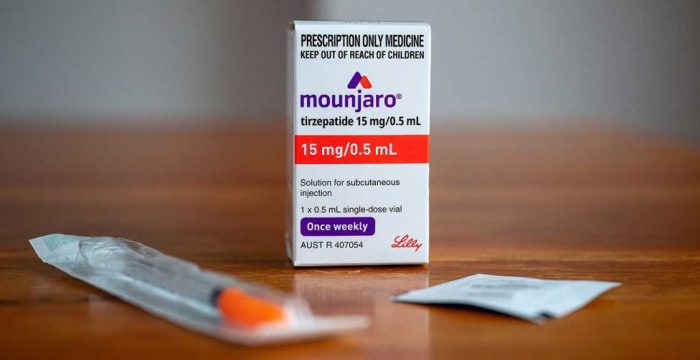Best digital health apps in 2025: A Glimpse into the Future of Healthcare
Best digital health apps in 2025 sets the stage for this enthralling narrative, offering readers a glimpse into a story that is rich in detail and brimming with originality from the outset. From the evolution of digital health apps to the integration of cutting-edge technologies, this exploration delves into the exciting advancements shaping the future of healthcare.
As we delve deeper into the realm of digital health apps in 2025, we uncover a landscape where personalized healthcare solutions, data privacy, user experience design trends, wearable technology integration, and remote monitoring capabilities play pivotal roles in transforming the way we approach wellness and medical care.
Overview of Digital Health Apps in 2025
The landscape of digital health apps has significantly evolved since 2020, with rapid advancements and innovations shaping the industry. By 2025, these apps are expected to revolutionize healthcare delivery and improve patient outcomes through cutting-edge technologies.Advancements and Innovations
- Integration of Artificial Intelligence (AI) and Machine Learning: Digital health apps in 2025 will leverage AI and machine learning algorithms to provide personalized and predictive healthcare solutions. These technologies will enable apps to analyze vast amounts of data, leading to more accurate diagnostics and treatment recommendations.
- Enhanced Telemedicine Features: Telemedicine capabilities within digital health apps will be further enhanced, allowing for virtual consultations, remote monitoring, and real-time communication between patients and healthcare providers. This will improve access to healthcare services, especially for individuals in remote or underserved areas.
- IoT Integration: The Internet of Things (IoT) will play a crucial role in digital health apps, enabling seamless connectivity between wearable devices, sensors, and the app itself. This integration will enable continuous monitoring of vital signs, activity levels, and other health metrics, providing users with a comprehensive view of their health status.
Impact on Healthcare Delivery and Patient Outcomes
- Improved Access to Care: Digital health apps will break down geographical barriers and allow individuals to access healthcare services from anywhere, reducing the need for in-person visits and improving overall convenience.
- Enhanced Disease Management: With advanced features like AI-driven insights and remote monitoring, patients can better manage chronic conditions and receive timely interventions, leading to improved health outcomes and reduced healthcare costs.
- Empowering Patients: Digital health apps empower patients to take control of their health by providing them with valuable information, tools for self-monitoring, and personalized recommendations, ultimately leading to better health literacy and proactive healthcare decisions.
Emerging Technologies in Digital Health Apps
As we look ahead to 2025, the integration of cutting-edge technologies in digital health apps is set to revolutionize the healthcare industry. Technologies like AI, IoT, and blockchain are expected to play a pivotal role in shaping the future of digital health solutions.Artificial Intelligence (AI)
AI is poised to significantly enhance the capabilities of digital health apps by enabling them to analyze vast amounts of data, provide personalized insights, and even assist in making medical diagnoses. Machine learning algorithms can help in early disease detection and treatment recommendations based on individual health data.Internet of Things (IoT)
The IoT devices will continue to be integrated into health apps, allowing for real-time monitoring of patients' vital signs, medication adherence, and overall health status. This connectivity enables healthcare providers to deliver timely interventions and personalized care to patients, leading to improved health outcomes.Blockchain Technology
Blockchain technology offers secure and transparent storage of health records, ensuring data integrity and privacy. By decentralizing data storage and enabling secure sharing of information, blockchain can streamline healthcare processes, reduce administrative burden, and enhance interoperability among different healthcare systems.Personalized Healthcare Solutions
In the realm of digital health apps, a significant shift towards personalized healthcare solutions is taking place. These apps are increasingly utilizing individual data to tailor treatments and recommendations for users, ultimately enhancing the effectiveness of healthcare services.Customized Treatment Plans
- Apps are now able to analyze user data, such as medical history, genetic information, and lifestyle choices, to create personalized treatment plans.
- By considering individual factors, these apps can recommend specific medications, therapies, or lifestyle changes that are most suitable for the user's unique needs.
- Examples include apps that help manage chronic conditions like diabetes or hypertension by providing personalized diet plans and exercise routines.
Enhanced Patient Engagement
- Personalized healthcare solutions lead to increased patient engagement as users feel more involved in their treatment plans.
- When individuals see the direct impact of personalized recommendations on their health outcomes, they are more likely to actively participate in their healthcare journey.
- Apps that offer personalized feedback and progress tracking help users stay motivated and engaged in their health goals.
Data Privacy and Security in Digital Health Apps
Data privacy and security are crucial aspects of digital health apps to ensure the confidentiality and integrity of sensitive health information. Developers are implementing various measures to enhance data protection and comply with regulations to safeguard user data.Measures to Enhance Data Protection
- Encryption: Developers are using encryption techniques to secure data transmission and storage, making it difficult for unauthorized parties to access sensitive information.
- Two-factor authentication: Implementing two-factor authentication adds an extra layer of security, ensuring that only authorized users can access the app and health data.
- Data anonymization: By anonymizing data, developers can strip personal identifiers from health information, protecting user privacy while still allowing for analysis and research.
Importance of Data Privacy Regulations
- Compliance with regulations: Adhering to data privacy regulations such as HIPAA (Health Insurance Portability and Accountability Act) ensures that digital health apps meet specific standards for protecting user data.
- Building trust: By following data privacy regulations, developers can build trust with users, assuring them that their health information is secure and confidential.
- Legal consequences: Failure to comply with data privacy regulations can result in legal consequences, including fines and reputational damage for the developers of health apps.
User Experience Design Trends
In the realm of digital health apps, user experience design plays a crucial role in engaging users, enhancing usability, and ultimately improving overall user satisfaction. By staying abreast of the latest trends in UI/UX design, developers can create apps that not only attract users but also encourage long-term usage and positive health behavior change.Personalization and Customization
One emerging trend in user experience design for health apps is the focus on personalization and customization. By offering personalized recommendations, tailored content, and customizable features, apps can better meet the unique needs and preferences of individual users. This level of personalization not only enhances user engagement but also increases the likelihood of sustained app usage.Interactive and Gamified Elements
Integrating interactive and gamified elements into health apps can significantly improve user engagement and motivation. Features such as progress trackers, rewards systems, and challenges can make the app experience more enjoyable and encourage users to stay committed to their health goals. By making the app experience feel more like a game, developers can promote long-term behavior change and positive health outcomes.Accessibility and Inclusivity
Designing health apps with accessibility and inclusivity in mind is another important trend in user experience design. By ensuring that the app is easy to navigate, understand, and interact with for users of all abilities, developers can reach a wider audience and provide equal access to valuable health resources. Features such as voice commands, adjustable font sizes, and color contrast options can make the app more inclusive and user-friendly for everyone.Integration with Wearable Technology
Digital health apps are increasingly integrating with wearable devices to provide users with a more comprehensive health monitoring experience. By combining app functionalities with wearable sensors, users can track their health data in real-time and make more informed decisions about their well-being.Advantages of Combining App Functionalities with Wearable Sensors
- Real-time Monitoring: Wearable devices continuously collect data, allowing for immediate feedback on health metrics.
- Increased Accuracy: By leveraging wearable sensors, digital health apps can provide more accurate and personalized insights based on real-time data.
- Convenience: Wearable devices are designed for seamless integration with apps, making it easier for users to access and interpret their health information.
Examples of Successful Collaborations
- Fitbit and MyFitnessPal: Fitbit activity trackers sync with the MyFitnessPal app to provide users with a holistic view of their activity levels and calorie intake.
- Apple Health and Strava: Apple Health integrates with the fitness tracking app Strava to allow users to automatically sync their workout data for a more comprehensive health profile.
Remote Monitoring and Telehealth Capabilities
Digital health apps have revolutionized remote monitoring and telehealth services by providing a platform for patients to connect with healthcare providers virtually. These apps allow for real-time data collection and analysis, enabling healthcare professionals to monitor patients' health status continuously.Benefits of Remote Monitoring and Telehealth
- Real-time data collection: Digital health apps enable the continuous monitoring of vital signs, symptoms, and other health metrics, providing healthcare providers with up-to-date information.
- Virtual consultations: Patients can have virtual appointments with their healthcare providers, reducing the need for in-person visits and increasing accessibility to care.
- Improved patient outcomes: Remote monitoring can help detect health issues early, leading to timely interventions and improved patient outcomes.
- Convenience and accessibility: Patients can receive care from the comfort of their homes, eliminating the need for travel and reducing healthcare costs.
Challenges and Limitations of Remote Healthcare Delivery
- Technological barriers: Not all patients may have access to the necessary technology or skills to use digital health apps effectively.
- Data privacy concerns: Ensuring the security and privacy of patient data transmitted through these apps is crucial to maintain patient trust and compliance.
- Lack of in-person interaction: Remote consultations may lack the personal touch and physical examination that in-person visits provide, potentially impacting the quality of care.
- Regulatory and reimbursement issues: Healthcare regulations and insurance coverage for telehealth services may vary, posing challenges for widespread adoption and implementation.




